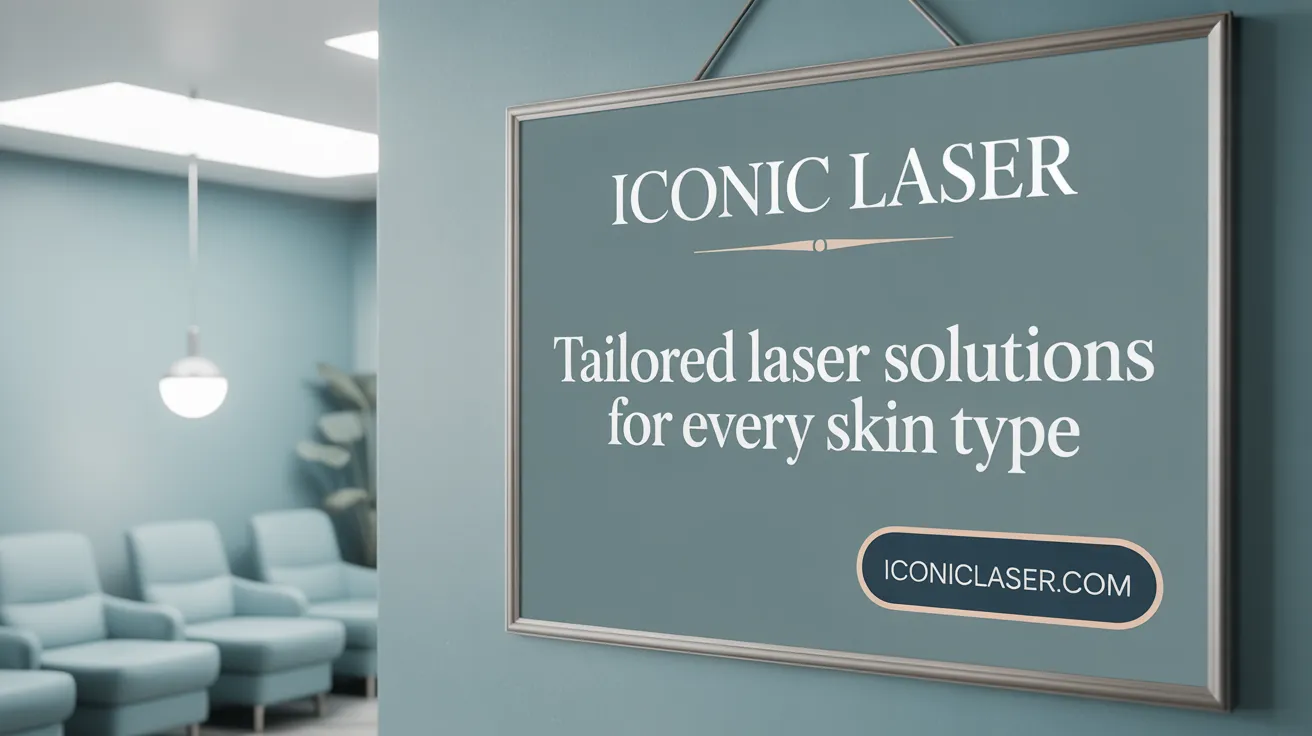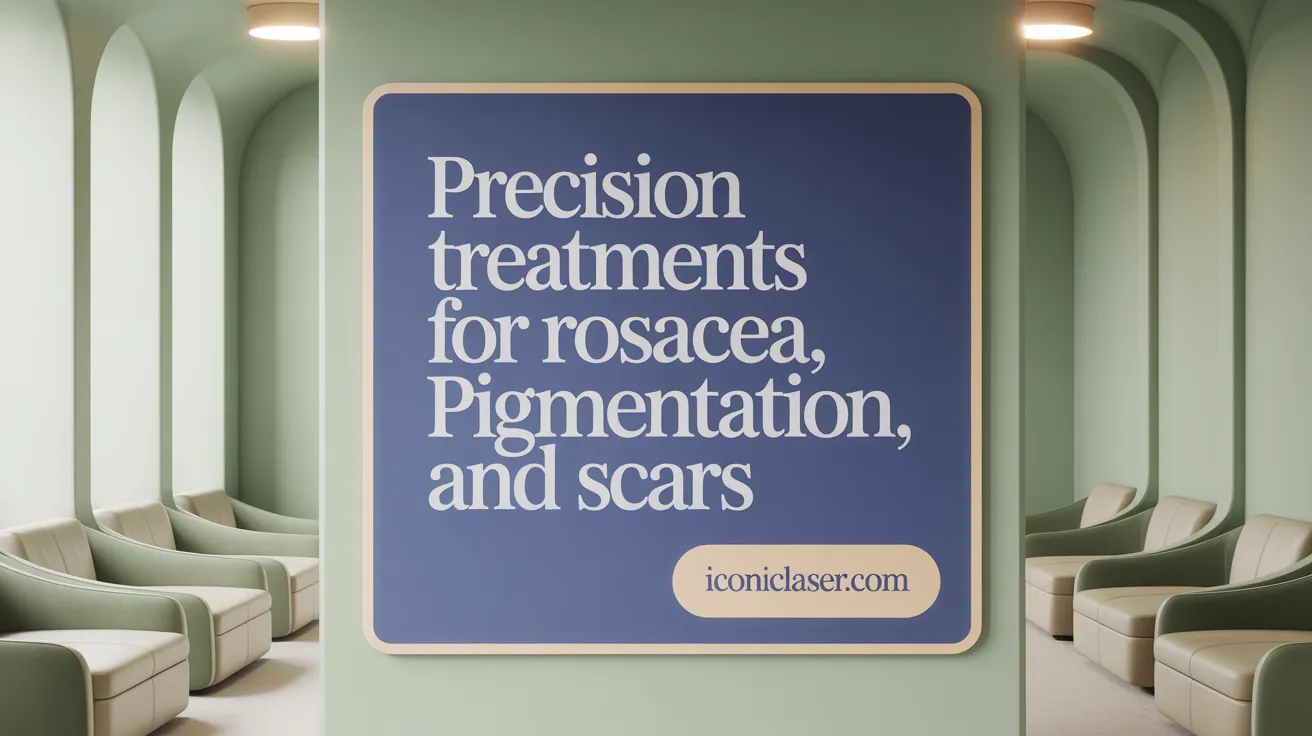Introduction to Advanced Laser Treatments for Skin Enhancement
Advanced laser treatments have transformed the landscape of dermatology, offering precise, effective, and customizable solutions for a wide array of skin concerns. From pigmentation irregularities and vascular issues to acne scars and signs of aging, modern laser therapies provide visible, long-lasting improvements with minimal downtime. This article delves into the technologies, procedures, benefits, safety considerations, and expected outcomes of these cutting-edge treatments, helping readers understand how to achieve healthier, more youthful skin through advanced laser innovations.
Technologies and Methods in Advanced Laser Treatments

What technologies and methods are commonly used in advanced laser treatments for skin issues?
Modern laser treatments encompass a variety of innovative techniques aimed at improving skin appearance and health. Among these, ablative and nonablative lasers are the most prominent. Ablative lasers, such as CO2 (carbon dioxide) and Er:YAG, remove the outer layer of skin to promote new, healthier tissue growth. Nonablative lasers work beneath the surface, stimulating collagen production without removing any skin, resulting in less downtime.
Fractional laser technology has revolutionized treatment by creating tiny, controlled channels in the skin. These microthermal zones expedite healing, reduce side effects, and effectively address scars, pigmentation, and skin laxity. Patients typically see significant improvements after multiple sessions.
Pulsed dye lasers, like the Vbeam®, are used to treat vascular skin conditions such as rosacea, broken blood vessels, and redness. Nd:YAG lasers penetrate deeper and are suitable for treating pigmentation issues on darker skin tones, reducing brown spots and Sun damage.
Energy-based devices have expanded beyond traditional lasers. Technologies such as fractional radiofrequency combine radio waves with light energy to stimulate collagen and tighten skin. These approaches are highly customizable, allowing treatments tailored to individual skin types and conditions.
Selection of appropriate technology depends on specific skin concerns and patient skin type. Advances in laser design now offer safer, more effective options that deliver precise targeting, minimal discomfort, and optimal results.
| Laser Type | Wavelength / Effect | Common Uses | Benefits |
|---|---|---|---|
| CO2 Laser | 10,600 nm / Water vaporization | Wrinkles, scars, sun damage | Deep resurfacing, long-lasting results |
| Er:YAG Laser | 2940 nm / Water | Fine lines, pigmentation, scars | Less thermal damage, quick healing |
| Pulsed Dye Laser | 585-595 nm / Hemoglobin targeting | Vascular lesions, rosacea | Targeted blood vessel destruction |
| Nd:YAG Laser | 1064 nm / Deeper penetration | Pigmentation, deep vascular issues | Safe for darker skin tones |
| Fractional RF | Radiofrequency energy / Collagen stimulation | Skin tightening, scars, wrinkles | Non-invasive, minimal downtime |
Overall, these technological advancements enable practitioners to customize treatments according to individual needs, improve skin quality, and ensure safer procedures for diverse skin types. Continuous innovation ensures that patients receive effective skin rejuvenation with reduced risks and downtime.
Diverse Types of Laser Procedures for Skin Conditions
What are the different types of laser procedures available for treating skin conditions?
Laser treatments for skin issues come in several varieties, each tailored to specific concerns and skin types. Broadly, they fall into two categories: ablative and non-ablative lasers.
Ablative lasers, such as CO2 and Erbium YAG, work by removing the outermost layer of skin. This process stimulates vigorous collagen production underneath, making them ideal for treating deep wrinkles, prominent scars, and sun-damaged skin. These procedures typically require longer recovery times but offer significant results for severe skin issues.
Non-ablative lasers, including Nd:YAG and diode devices, heat deeper layers of skin without breaking the surface. This promotes collagen growth gradually and is suited for mild to moderate skin concerns like fine lines, early photoaging, and vascular issues. Non-ablative treatments usually involve less discomfort and shorter downtime.
Fractional lasers, both ablative and non-ablative, are a popular choice because they create tiny microchannels in the skin, allowing for quicker healing and reduced side effects. These microthermal zones stimulate collagen and improve skin texture, tone, scars, and pigmentation.
Specialized lasers like pulsed dye and Intense Pulsed Light (IPL) targets blood vessels and pigmentation. Pulsed dye lasers are particularly effective for vascular conditions such as rosacea, broken blood vessels, and redness, collapsing abnormal vessels. IPL delivers broad-spectrum light that can treat sun spots, age spots, freckles, and uneven pigmentation.
For pigmentation issues, lasers like Alexandrite and picosecond devices focus on melanin, breaking down excess pigment into smaller particles that the body naturally clears. These are especially useful for conditions like melasma, pigmented birthmarks, and age-related sun damage.
Some treatments are specifically approved and cleared by the FDA for conditions like psoriasis and vitiligo, such as the Excimer laser. These targeted therapies can improve skin appearance and manage symptoms with minimal side effects.
In summary, the range of laser technology offers versatile options for skin rejuvenation, vascular issues, pigmentation, and more. The choice of treatment depends on individual skin type, concern severity, and desired outcomes, making consultation with a qualified dermatologist essential.
How Laser Treatments Enhance Skin Appearance and Texture

How do laser treatments improve the appearance and texture of the skin?
Laser treatments are highly effective for rejuvenating the skin by targeting various skin concerns that affect appearance and texture. They work primarily by vaporizing the damaged outer layers of skin and stimulating the body's natural production of collagen and elastin proteins.
Collagen and elastin are key proteins that give skin its firmness, elasticity, and smoothness. As we age, levels of these proteins decrease, leading to wrinkles, sagging skin, and uneven texture. Laser therapies, such as ablative lasers like CO2 or erbium lasers, destroy damaged skin layers, prompting the body to generate new, healthier skin.
Fractional lasers utilize a technique that creates tiny, controlled zones of injury called micro-channels. This approach reduces overall skin damage, shortens recovery time, and still stimulates deep collagen growth. The result is a more even skin surface, diminished fine lines, and improved skin firmness.
Visible outcomes include reduced appearance of fine lines and wrinkles, minimized scars from acne or injury, and correction of pigmentation issues such as age spots and sun damage. The process enhances skin tone and texture, leading to a more youthful appearance.
Post-treatment, the skin may look red, swollen, or sensitive temporarily. However, as new tissue develops and old damaged layers are sloughed away, skin appears smoother, tighter, and more radiant.
To maintain these improvements, ongoing skin care practices like diligent sun protection, moisturizing, and avoiding environmental damage are essential. These steps help prolong the rejuvenating effects of laser procedures and support healthier, more resilient skin over time.
Comparing Laser Treatments: Results, Safety, and Suitability
How can one compare different laser treatment options based on results, safety, and suitability?
When evaluating various laser therapies, it is essential to understand their specific mechanisms and intended outcomes. Ablative lasers, such as CO2 and Er:YAG, remove outer skin layers to stimulate collagen growth, leading to significant improvements in skin texture, wrinkles, and scars. These are most suitable for severe skin issues but require longer recovery periods and carry higher risks, especially for darker skin tones.
Non-ablative and fractional lasers, like fractional CO2 or Nd:YAG, Inc. offer less invasive options. They stimulate collagen without destroying skin surface, delivering gentle improvements and shorter downtimes. These are ideal for mild to moderate aging signs or pigmentation concerns.
Safety considerations are also paramount. Devices vary in their compatibility with different skin types; for example, some lasers can pose risks of hyperpigmentation or scarring in darker skin tones. Provider expertise and proper device calibration play critical roles in minimizing side effects and maximizing efficacy.
From a scientific perspective, studies show that ablative lasers generally produce more dramatic, long-lasting results, but with heightened procedural risks. Non-ablative types, while safer and with quicker recovery, often require multiple sessions to achieve comparable outcomes.
Ultimately, the choice of laser treatment should be individualized. It depends on the patient’s skin condition, age, desires for downtime, and safety considerations. Consultation with a dermatologist or trained specialist helps tailor the most appropriate plan, balancing efficacy with personal safety.
Laser Resurfacing and Energy-Based Skin Rejuvenation Processes
How do laser resurfacing and energy-based treatments work to rejuvenate the skin?
Laser resurfacing and other energy-based skin treatments use controlled thermal energy delivery to stimulate the skin's natural healing process. This is achieved by heating targeted tissue layers to activate collagen remodeling, which is essential for improving skin’s texture, elasticity, and overall tone.
Lasers are designed to operate at specific wavelengths, allowing precise targeting of different skin layers. Ablative lasers, for example, remove damaged outer skin layers, creating a fresh surface that encourages new skin growth. Nonablative lasers heat the underlying dermis without removing outer tissue, promoting collagen production with minimal downtime.
Fractional laser technology creates tiny, controlled micro-injuries in the skin. These micro-channels trigger the body’s repair mechanisms, stimulating the growth of new collagen and elastin fibers, which results in smoother, firmer skin and diminished wrinkles.
In addition to lasers, other devices like radiofrequency (RF) and focused ultrasound convert electrical or sound energy into heat. RF devices selectively target collagen fibers at different depths, causing collagen contraction and stimulating new fiber formation. Focused ultrasound produces localized thermal injury at precise depths, leading to tissue tightening and lifting.
These treatments carefully regulate thermal energy to maximize benefits and reduce risks. The thermal injury triggers molecular responses such as heat shock protein activation, cellular signaling pathways, and growth factor release. These biological responses promote cell repair, regeneration, and extracellular matrix remodeling.
Overall, the essence of these methods is to induce controlled tissue injury that activates the skin’s innate healing response. The result is visibly rejuvenated skin that appears brighter, firmer, and more youthful, with ongoing collagen production providing long-term improvements.
Understanding Risks and Recovery in Advanced Laser Therapies
What should patients expect regarding the risks and recovery associated with advanced laser therapies?
Patients undergoing advanced laser treatments should be aware that, like any medical procedure, these therapies carry some associated risks. Common side effects include redness, swelling, and temporary discomfort shortly after treatment. Some patients might also experience pigment changes—either hyperpigmentation or hypopigmentation—particularly in darker skin tones. Although rare, there is a potential for scarring or skin infections if post-treatment care is not properly followed.
Recovery times can vary widely depending on the specific type of laser used. Nonablative lasers, which stimulate collagen without damaging the outer skin layer, generally require minimal downtime. Patients often experience slight redness or swelling that subsides within a few hours to days, allowing them to resume their regular activities quickly.
In contrast, ablative laser procedures that remove the outer skin layer tend to cause more significant redness, swelling, and sensitivity. Healing can last from several days to weeks, and there may be crusting, peeling, or scabbing in the initial healing phase. Longer recovery periods demand diligent aftercare to prevent infection and pigment irregularities.
To minimize risks, many clinics emphasize strict pre- and post-procedure protocols. Sun protection is critical before and after treatment to prevent hyperpigmentation. Patients are advised to avoid irritants, use prescribed ointments, and follow their dermatologist’s guidelines closely.
Skin type plays a vital role in the treatment outcome. For example, people with darker skin tones are more prone to pigmentation changes; therefore, practitioners often adjust laser settings or recommend specific therapies suited for their skin type.
Overall, with proper planning, experienced providers, and diligent care, laser therapies can be safe, effective, and provide impressive, long-lasting skin improvements. Patients can achieve optimal results while managing potential side effects through careful adherence to medical advice and choosing qualified professionals.
Targeting Specific Skin Concerns with Advanced Laser Technologies

Rosacea and vascular lesion treatments
Laser therapy offers a highly effective solution for reducing redness, visible blood vessels, and broken capillaries associated with rosacea. Using specialized devices like the Pulsed Dye Laser and Vbeam Laser, practitioners target hemoglobin in blood vessels. The laser's energy causes these vessels to collapse and be reabsorbed by the body, diminishing facial redness and visible vessels with minimal discomfort and downtime.
Pigmented lesion removal including melasma and sun spots
Lasers are also instrumental in addressing pigmented skin issues such as melasma, sun spots, and hyperpigmentation. Devices like the Alexandrite Laser and IPL emit specific wavelengths absorbed by melanin, the pigment responsible for skin color. This process breaks down excess pigment, allowing the body's natural clearance system to remove the pigment particles. Multiple sessions may be needed for optimal results, often with little to no downtime.
Acne scar reduction with fractional lasers
Improving the appearance of acne scars is possible through fractional laser treatments. Fractional devices create tiny columns of treated tissue—called micro-channels—that stimulate collagen production and skin remodeling. Different lasers cater to various depths, with some targeting moderate scars and others designed for deeper scars. These treatments often require several sessions, but they are popular due to their efficacy and reduced recovery time.
Laser hair removal and tattoo removal capabilities
Laser technology has revolutionized hair removal by targeting hair follicles with concentrated light energy, resulting in long-lasting reduction of unwanted hair. Similarly, tattoo removal is achieved through laser devices that break down tattoo ink particles into smaller fragments, which are then naturally eliminated by the body. These procedures are typically quick and involve minimal discomfort.
FDA-cleared lasers for psoriasis, vitiligo, and atopic dermatitis
Certain laser systems have received FDA clearance to treat skin conditions like psoriasis, vitiligo, and atopic dermatitis. These treatments often involve targeted laser or light therapies that modulate immune responses and stimulate skin regeneration. For example, excimer lasers focus on specific pigmentation and immune cells, improving symptoms with minimal side effects.
| Treatment Area | Laser Type | Purpose | Additional Details |
|---|---|---|---|
| Rosacea & Vessels | Pulsed Dye Laser, Vbeam | Reduces facial redness, blood vessels | Targets hemoglobin; minimal downtime |
| Pigmentation | Alexandrite, IPL | Removes sun spots, melasma | Discolors excess melanin |
| Acne Scars | Fractional CO2, Fraxel | Collagen stimulation & scar improvement | Tightens skin, improves texture |
| Hair/Tattoo | AlexLaser, Q-switched IPL | Hair removal, tattoo ink breakdown | Long-lasting results |
| Skin Conditions | Excimer Laser | Psoriasis, Vitiligo, Atopic Dermatitis | Improves immune response |
Advanced laser technology enables targeted treatments for a wide array of skin concerns, offering personalized options with proven effectiveness and safety.
Innovative Laser Platforms Enhancing Patient Outcomes and Experience

Aerolase Technology for All Skin Types
Aerolase has developed cutting-edge laser systems designed to be safe and effective across all skin tones and types. Unlike traditional lasers, their technology minimizes the risk of pigmentation issues, making treatments accessible to a diverse patient population.
Optimization of Energy Delivery and Patient Comfort
A major advantage of Aerolase's approach is the sophisticated energy delivery system. It maximizes the effectiveness of each session while significantly reducing discomfort. This efficient energy use results in fewer side effects and a more tolerable experience for patients.
Faster Treatment Sessions with Better Efficacy
Thanks to their innovative technology, treatments are quicker, often taking less than 30 minutes. Patients benefit from visible improvements in fewer sessions, making the overall process more convenient and appealing.
Device Usability for Practitioners
Aerolase systems are designed with ease of use in mind. They feature user-friendly interfaces that allow practitioners to operate the device confidently, ensuring precise control and consistent outcomes across different skin concerns.
Patient Testimonials and Visible Improvement Evidence
Many patients report high satisfaction levels, citing rapid results and minimal downtime. Clinical evidence and before-and-after photos support the effectiveness of Aerolase’s treatments, particularly for conditions like acne, scarring, pigmentation, and vascular lesions.
| Technology Aspects | Benefits | Additional Details |
|---|---|---|
| All Skin Types | Safe & effective | Suitable for diverse skin tones |
| Energy Optimization | Less discomfort | Maximizes results with minimal pain |
| Rapid Sessions | Increased convenience | Treatments last less than 30 minutes |
| User-Friendly Devices | Ease of use | Designed for practitioners |
| Clinical Evidence | Proven results | High patient satisfaction |
Conclusion: Unlocking the Potential of Advanced Laser Skin Treatments
Advanced laser treatments represent a dynamic and evolving frontier in dermatologic care, marrying sophisticated technology with medical expertise to offer powerful, customizable solutions for skin rejuvenation and correction. By understanding the types of lasers, their mechanisms, and applications, patients and practitioners alike can make informed decisions tailored to individual skin concerns and goals. The balance of effective results with safety and minimal downtime positions laser therapies as a preferred choice for those seeking visible, long-term improvements without surgery. As innovations continue to emerge, the future holds even greater promise for accessible, efficient, and versatile skin treatments that enhance confidence and quality of life.
References
- 5 Skin Issues You Did Not Know Could Be Treated with ...
- Best Cosmetic Laser & Energy Treatments | Get Results
- Unlock Radiant Skin with Aerolase Laser Treatments
- Laser resurfacing
- Laser Treatments for Pigmented Lesions and Skin Imperfections
- Skin Resurfacing Treatments | ABCS
- The Rise of Beauty Tech: How Lasers Are Changing Skin ...
- Discover the Benefits of Laser Treatments and What They ...
- Skin Laser Treatments
- Current Laser Resurfacing Technologies: A Review that ...
